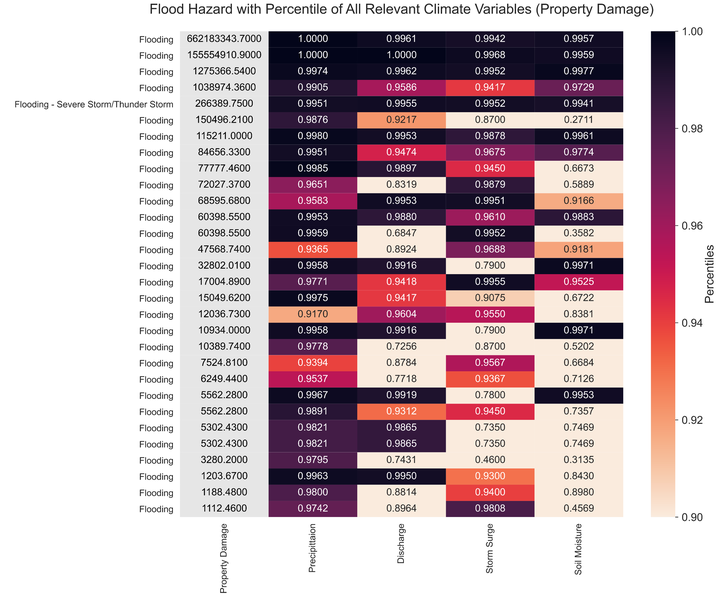 Image credit: Javed Ali
Image credit: Javed Ali
Abstract
Natural hazards such as coastal and river floods, tornadoes, droughts, heatwaves, wildfires, and landslides cause significant economic losses (e.g., agriculture and property damage) and notable counts of fatalities. While natural hazards are often considered to be caused by a single climatic driver (e.g., coastal flood from storm surge only), they can be associated with the combined occurrence of multiple drivers (e.g., coastal flood driven by storm surge and precipitation). Defining whether the climatic drivers (e.g., precipitation, temperature, or wind) are extreme enough to turn the hazards into disasters is crucial for estimating disaster risks. To date, extreme events are often defined using the block maxima or peaks over threshold methods ignoring the effects of the built environment and socio-economic conditions. However, a hazard with the same magnitude can cause quite different impacts in regions with varying built environments and socio-economic conditions. Additionally, when multiple climatic drivers are involved, traditional methods of defining extreme events are challenging to apply.
In previous studies, compound extreme events were assessed solely based on information of the climate drivers and extreme events were defined by using different statistical criteria. In this research, we developed an impact-based approach for estimating critical thresholds of climatic drivers for different hazards and assessing their possible compounding effects based on historical socio-economic impact data. Thus, we implicitly account for the built environment and socio- economic conditions of each region. We use the SHELDUS database (CEMHS, 2020) to identify the historical hazard events that caused socio-economic losses (property and crop damage) across the U.S. Informed by this database, we obtain time series for 12 climatic drivers from historical observations and reanalysis datasets from 1979 to 2019. Using the newly developed method, we linked all climate variables to each impact event to estimate if only one or multiple drivers were involved in creating socio-economic impacts and analyzed their compounding effects. Preliminary results for Miami-Dade County show that hazards resulting in higher socio-economic impact are all compound events caused by multiple climate drivers. We also found that the thresholds at which hazards start to cause impacts are reduced when combined with other drivers. Our results highlight the relevance of socio-economic impacts when assessing compounding effects of natural hazards.